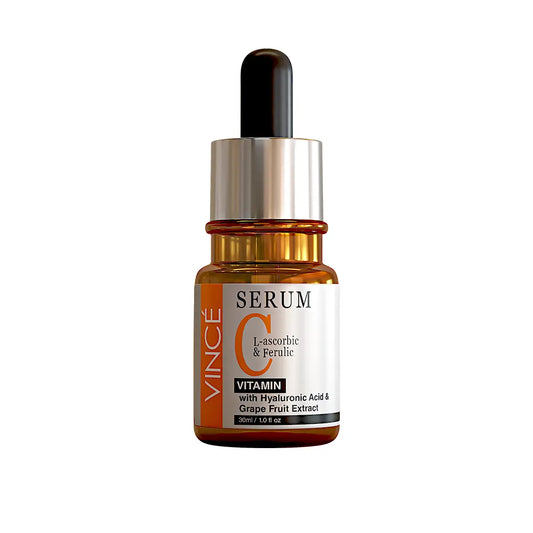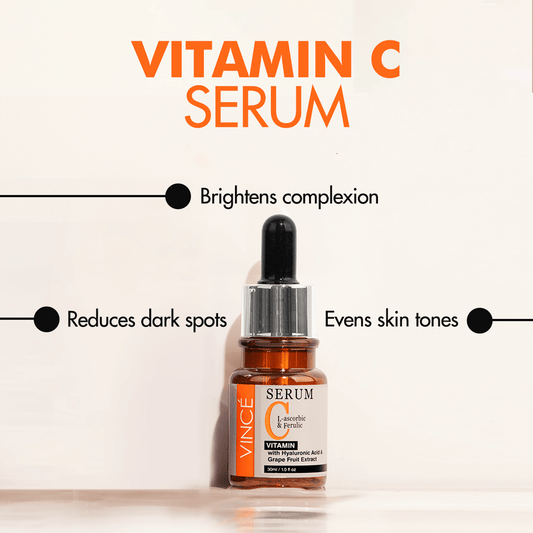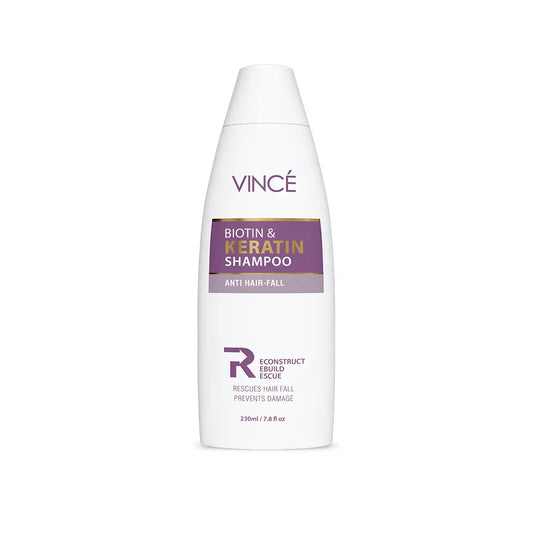9 Causes of Hyperpigmentation on Face

Hyperpigmentation refers to the darkening of the skin caused by an overproduction of melanin pigment in the skin. Melanocytes, specialized skin cells, produce more melanin pigment in response to sunlight, which can lead to the darkening and tanning of the skin's outer layer.
Freckles are patches of dark pigmentation that occur due to uneven melanin synthesis. Although rare, there are other sources besides melanin that can cause skin darkening.
Hyperpigmentation occurs when an excessive amount of melanin is produced by skin cells, which is responsible for determining an individual's skin tone. This excessive melanin accumulation in a specific region of the skin leads to the appearance of darker skin in that area.
Causes of Hyperpigmentation

Most people have severe pigmentation on their faces, and they want to know how to remove pigmentation from face permanently. This is the question that most people ask dermatologists. But the pigmentation treatment is associated with the extinction of the causes of hyperpigmentation.
These are some of the most common causes and reasons for hyperpigmentation on the face and body.- Exposure to the Sun.
- Inflammation of Skin.
- Melasma.
- Medications.
- Trauma to the Skin.
- Reactions to drug use.
- Haemochromatosis.
- Maturational dyschromia.
- Exogenous ochronosis.
1. Exposure to the Sun

Overexposure to the sun is a significant cause of hyperpigmentation, as sunlight can trigger the production of melanin. Continuous sun exposure can disrupt the melanin production process and contribute to the development of hyperpigmentation.
2. Inflammation of Skin

Hyperpigmentation can also result from any damage to the dermis or epidermis layers of the skin. When the epidermis is inflamed, melanocytes are stimulated to produce more melanin, which may also transfer to nearby keratinocytes.
Prolonged or continuous exposure to the sun can darken the resulting post-inflammatory pigmentation. Using sunscreen is the primary precautionary measure to prevent skin inflammation and subsequent hyperpigmentation.
3. Melasma

Melasma is characterized by the appearance of brown or blue-grey patches or freckle-like spots on the skin, often referred to as the "pregnancy mask."
The condition is caused by an overproduction of melanocytes, which are skin cells responsible for producing melanin.
Although melasma is a common and harmless condition, treatments are available to alleviate the symptoms, and the condition typically fades after a few months.
4. Medications

The photosensitive properties of certain medications can cause a range of skin reactions when exposed to sunlight, including hyperpigmentation, rashes, and other skin irritations. These medications can include antibiotics, antidepressants, diuretics, antipsychotics, and other prescription and over-the-counter drugs.
It is essential to read medication labels and speak with a healthcare provider to understand the potential side effects of medications and how to minimize the risk of skin damage or other adverse effects from sun exposure.
Taking precautions such as wearing protective clothing, using sunscreen, and limiting sun exposure during peak hours can help prevent skin damage while taking photosensitive medications.
5. Trauma to the Skin

Damage to the skin can occur when the top layer of the skin, which is also the bottom layer of the epidermis, is affected. This can create an opening for pigments to enter and become trapped in the dermis layer of the skin, making the resulting pigmentation more difficult to treat.
6. Reactions to drug use
Around 10 to 20% of cases of acquired hyperpigmentation are caused by drug-induced skin pigmentation.
Medications such as non-steroidal anti-inflammatory drugs (NSAIDs), phenytoin, antimalarials, antipsychotics, cytotoxic drugs, and tetracyclines can lead to pigmentation of the skin.
In some cases, certain medications can cause a fixed drug eruption, which may be followed by localized hyperpigmentation that typically fades over time.
7. Haemochromatosis

Hemochromatosis is not known to directly cause hyperpigmentation; some individuals with the condition may develop a darkening of the skin, known as bronze skin, due to the deposition of excess iron in the skin.
Bronze skin is a relatively rare symptom of hemochromatosis and is more commonly seen in individuals with advanced disease.
The discoloration typically affects the skin on the lower abdomen, genital region, and the inner aspects of the thighs and may appear as a brownish-gray color.
8. Maturational Dyschromia

Maturational dyschromia can cause hyperpigmentation in some cases. Maturational dyschromia is a type of hyperpigmentation that commonly affects young women and is typically characterized by small, dark spots on the face, most commonly on the cheeks and forehead.
The cause of maturational dyschromia is not well understood, but it is believed to be related to hormonal changes, sun exposure, and genetics. The condition is often referred to as a "pregnancy mask" or "melasma" when it occurs in pregnant women or those taking hormonal medications.
The hyperpigmentation associated with maturational dyschromia is often worsened by sun exposure and may be more noticeable in the summer months.
Treatment for maturational dyschromia typically involves avoiding sun exposure, using sun protection measures such as wearing hats and sunscreen, and using skin-lightening creams or chemical peels to help reduce the appearance of hyperpigmentation.
9. Exogenous ochronosis

Exogenous ochronosis is a rare skin condition that occurs when a person's skin is exposed to certain chemicals, particularly those containing hydroquinone. Hydroquinone is a common ingredient in many skin-lightening products, which are often used to treat conditions such as hyperpigmentation, age spots, and melasma.
The hyperpigmentation associated with exogenous ochronosis typically appears as grayish-brown or blue-black patches on the affected skin. These patches may be more pronounced in areas that receive more sun exposure, such as the face and hands.
It's important to note that exogenous ochronosis is a rare condition, and not everyone who uses hydroquinone or other skin-lightening products will develop it.
However, if you're concerned about hyperpigmentation or other skin issues, it's always a good idea to talk to a dermatologist who can help determine the best course of treatment and remedy for your individual needs.
These are the most effective ways to reduce hyperpigmentation. you will have to adopt a specific lifestyle and daily routine that may help you to get rid of Hyperpigmentation.
Treatments for Hyperpigmentation
After discussing what causes hyperpigmentation, it is time to discuss possible treatments and remedies for pigmentation on the face and body. The hyperpigmentation treatment is generally determined by the exact cause and nature of pigmentation on the skin and to what extent your skin is affected by it. These are some treatments for hyperpigmentation.
- Chemical Peels.
- Microdermabrasion.
- Laser Resurfacing.
- Cryotherapy.
1. Chemical Peels
To address discolored skin, a chemical peel utilizes a chemical solution to eliminate the upper layers of the skin and resurface it. The intensity of the chemical peel varies from mild to deep, depending on the extent of the pigmentation.
2. Microdermabrasion
Microdermabrasion is a cosmetic technique that gently exfoliates the top layer of the skin to improve its texture and tone. It is used to address skin problems like photoaging, sun damage, scars, and uneven pigmentation. The procedure is considered effective in treating conditions like melasma when combined with topical or oral treatments.
The use of Intense Pulsed Light involves utilizing laser energy for the precise targeting and elimination of pigmented or damaged skin cells.
IPL can be employed to treat a range of skin issues, including acne marks, hyperpigmentation, melasma, freckles, and sun damage.
3. Laser Resurfacing
The use of lasers to minimize the appearance of scars and pigmentation, even out skin tone, tighten the skin, and remove tumors is known as laser resurfacing.
Laser skin resurfacing is an effective treatment for various skin issues, wherein the outer layer of skin is eliminated by the laser while the underlying tissue is heated to stimulate new collagen production.
The newly grown skin is smoother and tighter. Ablative laser treatments such as carbon dioxide lasers, erbium lasers, and advanced combination systems are examples of this.
4. Cryotherapy
Cryotherapy is a treatment recommended by dermatologists for various skin conditions, which involves using extreme cold to freeze and remove abnormal tissue.
By administering liquid nitrogen to a targeted area and freezing it for a few seconds, pigmented cells are destroyed, resulting in a permanent paler patch at the treatment site as the skin heals.
Home Remedies for Pigmentation
Eating nutrient-rich foods is a natural and effective way to promote long-term skin health, as compared to applying external skin products. Foods that are high in vitamin C, such as amla, orange, broccoli, and strawberries, are especially beneficial due to their healing properties.
If you are struggling with hyperpigmentation, using home remedies can help. There are several natural ingredients that have skin-lightening properties, such as turmeric, aloe vera, green tea extract, tomato, apple cider vinegar, milk, and curd. Incorporating these ingredients into your skincare routine can effectively treat hyperpigmentation.
Products for Hyperpigmentation
We have discussed several treatments for hyperpigmentation on face. There are also some products that are helpful and result-oriented in getting rid of hyperpigmentation.
These skincare products are advanced freckle cream & face wash and vitamin c serum. Now, we will discuss their benefits and how they will be helpful for your pigmented skin.
1. Vince Advanced Freckle Face Wash
The Vince Advanced Freckle Face Wash is designed to revitalize the skin and reduce the appearance of stubborn freckles using advanced ingredients.
This gentle formula works to remove impurities, dullness, and dust particles from deep within the skin, leaving it refreshed and deeply purified. Additionally, it provides long-lasting hydration to help nourish and rejuvenate the skin.
2. Vitamin C Serum
This is a highly stable Vitamin C serum that provides powerful anti-aging benefits to the skin.
Infused with skin-brightening L-ascorbic and ferulic acids, as well as hydrating hyaluronic acid and a soothing blend of grapefruit extract, it works to reduce inflammation, even out skin tone, and promote healthy collagen production while providing deep moisture to dry skin.
Conclusion
Hyperpigmentation is a serious skin concern that needs to be addressed in order to maintain your skin's health. In this article, our goal is to provide a comprehensive guide on the causes of hyperpigmentation and the best treatments that can help you get rid of this problematic skin issue.
Frequently Asked Question
1) What causes sudden hyperpigmentation on face?
Ans: The rapid increase in melanin causes sudden hyperpigmentation. When melanin in your skin increases rapidly due to any reason or health issue, the pigmentation on the skin also increases according to it.
2) How do I stop hyperpigmentation on my face?
Ans: Adopting a proper healthy lifestyle and using beneficial skin products like advanced freckle cream & face wash and vitamin c serum can stop pigmentation on your face.
3) Which deficiency causes hyperpigmentation on the face?
Ans: The deficiency of Vitamin B-12 causes hyperpigmentation. Folic acid deficiency can also be the reason for hyperpigmentation.
4) Can hyperpigmentation be cured permanently?
Ans: The minor pigmentation can be cured, but it takes a long time to be cured permanently. You have to do treatments and use products to get immediate positive results in this regard.




